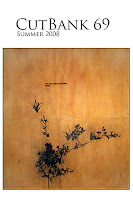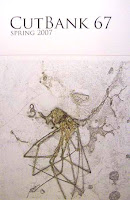
Burnside Review Press, 2007
Reviewed by Kristina Marie Darling
In Leslie Jamison’s The Wintering Barn, Napoleon’s army collides head-on with savants, scholars, and the Pasha of Egypt, setting the stage for a quirky, unpredictable chapbook of fiction. Depicting the journey of Etienne, a researcher who specializes in animals, as he accompanies the French army on a military campaign, Jamison’s work delves into provocative subjects – of which prostitution, infidelity, and the excesses of European royalty are merely a few examples – while remaining lyrical and lighthearted throughout. Combining the metaphors of a finely crafted poem with intriguing characters and an unmistakable narrative voice, The Wintering Barn presents an engaging portrait of Etienne, dazzling readers with exotic locales and evocative images all the while.
In depicting the protagonist’s journey, Leslie Jamison’s use of recurring images to structure the chapbook is impressive. Divided into several episodes, each taking place in a different time and place, these sections are gracefully woven together through repeated descriptions of giraffes, albeit in different contexts. Stating early in the chapbook that Etienne’s love interest, Claude, had recently purchased a giraffe in Egypt, Jamison writes: “He turned over the receipt to show an animal whose edges were furry where the ink had smeared. It looked like a horse whose neck had been pulled like taffy. It was stretched next to a tree. They were the same size. I tried to imagine the corpse I had seen in the desert – what would it have looked like alive, standing on four crooked legs?”(5). Reappearing in Marseilles, again in Egypt, and at the end of the chapbook, such descriptions often serve as links between scenes, settings, and characters. Structured more poetically than a typical short story, The Wintering Barn is subtle and innovative in its use of imagery to forge connections between plot elements.
The structure of the chapbook works well with the repeated themes and motifs in the text, which often deal with romances that could have blossomed had circumstances been different. Ranging from Etienne’s love for Claude to Claude’s failed marriage, these unfulfilled relationships are depicted across several different times and places, linked by common imagery that shifts with the plot of the chapbook. Jamison writes, for example: “I think of Claude: asking questions about the color of the sky, dipping slick plums in sugar, clutching that receipt in the midst of awful dreams. He never met the animal he bought. Maybe it never existed. Paint me next to it, he might have said. To show the height”(17). Depicting the unexplored possibility of Etienne’s relationship with Claude alongside the dream of a spectacular pet giraffe that never materialized, Jamison’s imagery unites plot elements while further illuminating them. Suggesting that, like the exotic animal that Claude never met, his relationship with Etienne remains both majestic and impossible, Jamison’s shifting images and fragmented text render familiar themes both relatable and suddenly strange.
The Wintering Barn is an enigmatic, intelligent read. Anyone who enjoys fiction that is quirky and lyrical throughout will be missing out if they don’t add Leslie Jamison’s chapbook to their collection. Five stars.
**
Leslie Jamison has recently published work in A Public Space, Tin House, Black Warrior Review and Best New American Voices 2008. She lives in New Haven, Connecticut.
**
Kristina Marie Darling is a graduate of Washington University in St. Louis. She is the author of four chapbooks, including Fevers and Clocks (March Street Press, 2006) and The Traffic in Women (Dancing Girl Press, 2006). A Pushcart Prize nominee in 2006, her poems, reviews, and essays have appeared or are forthcoming in Janus Head, Rattle, The Mid-America Poetry Review, Rain Taxi, The Adirondack Review, The Main Street Rag, The Mid-American Review, Jacket, Redactions: Poetry and Poetics, and other journals. Recent awards include residencies from the Centrum Foundation and the Mary Anderson Center for the Arts.



